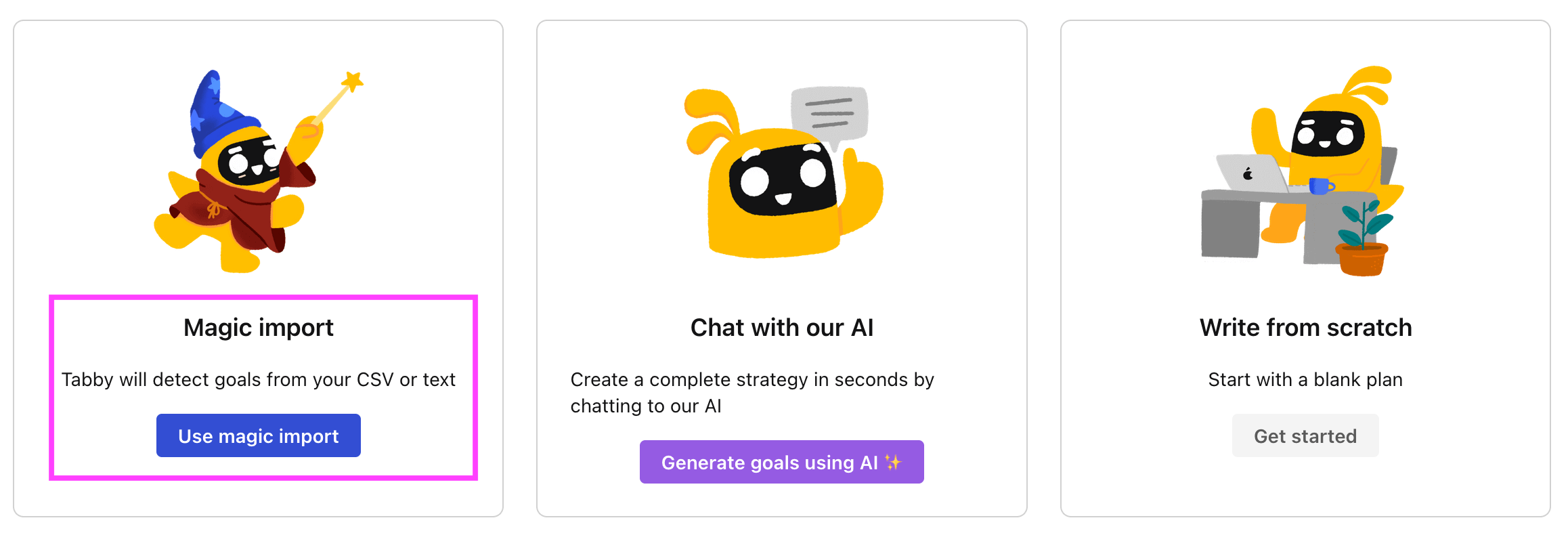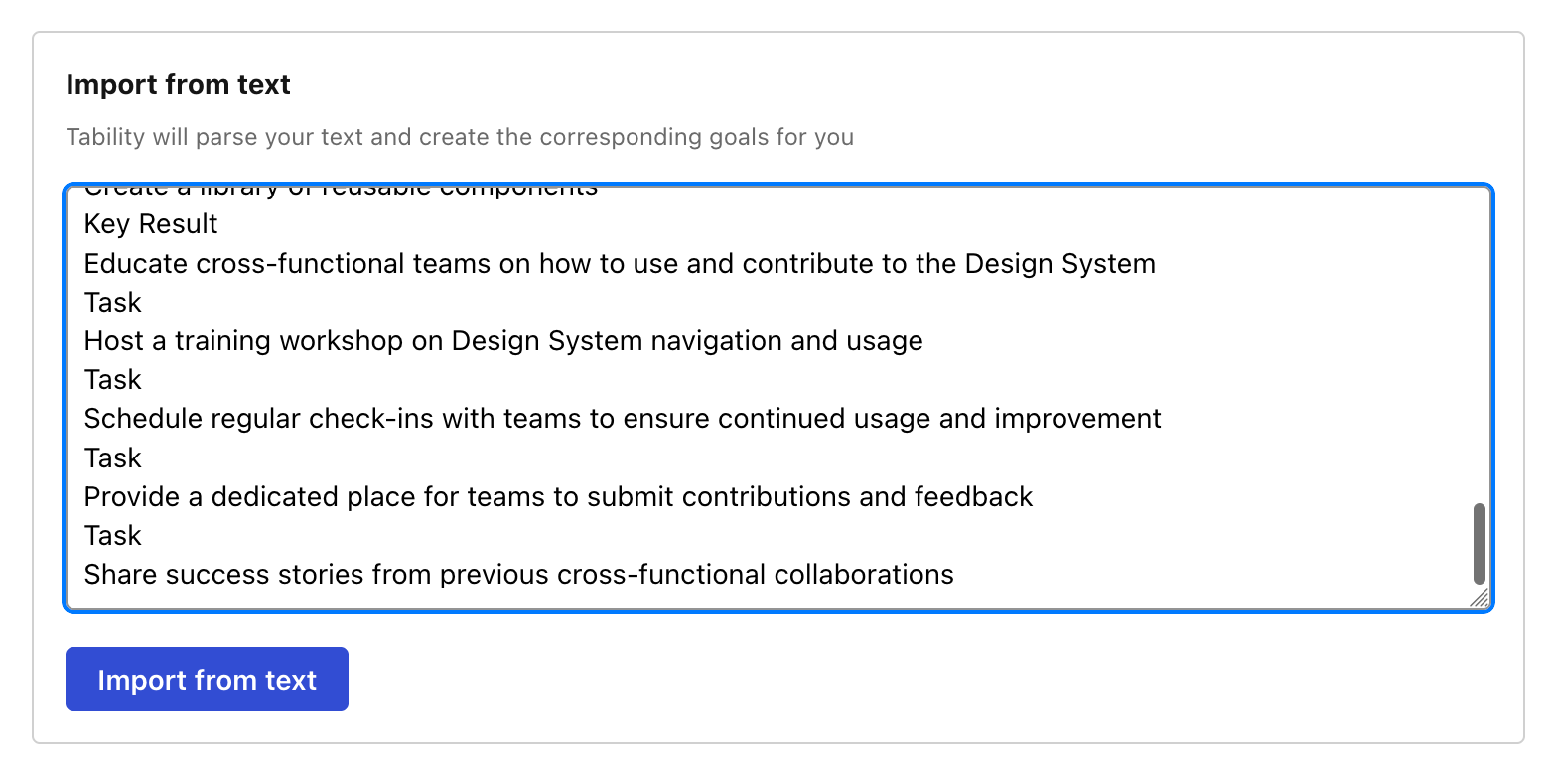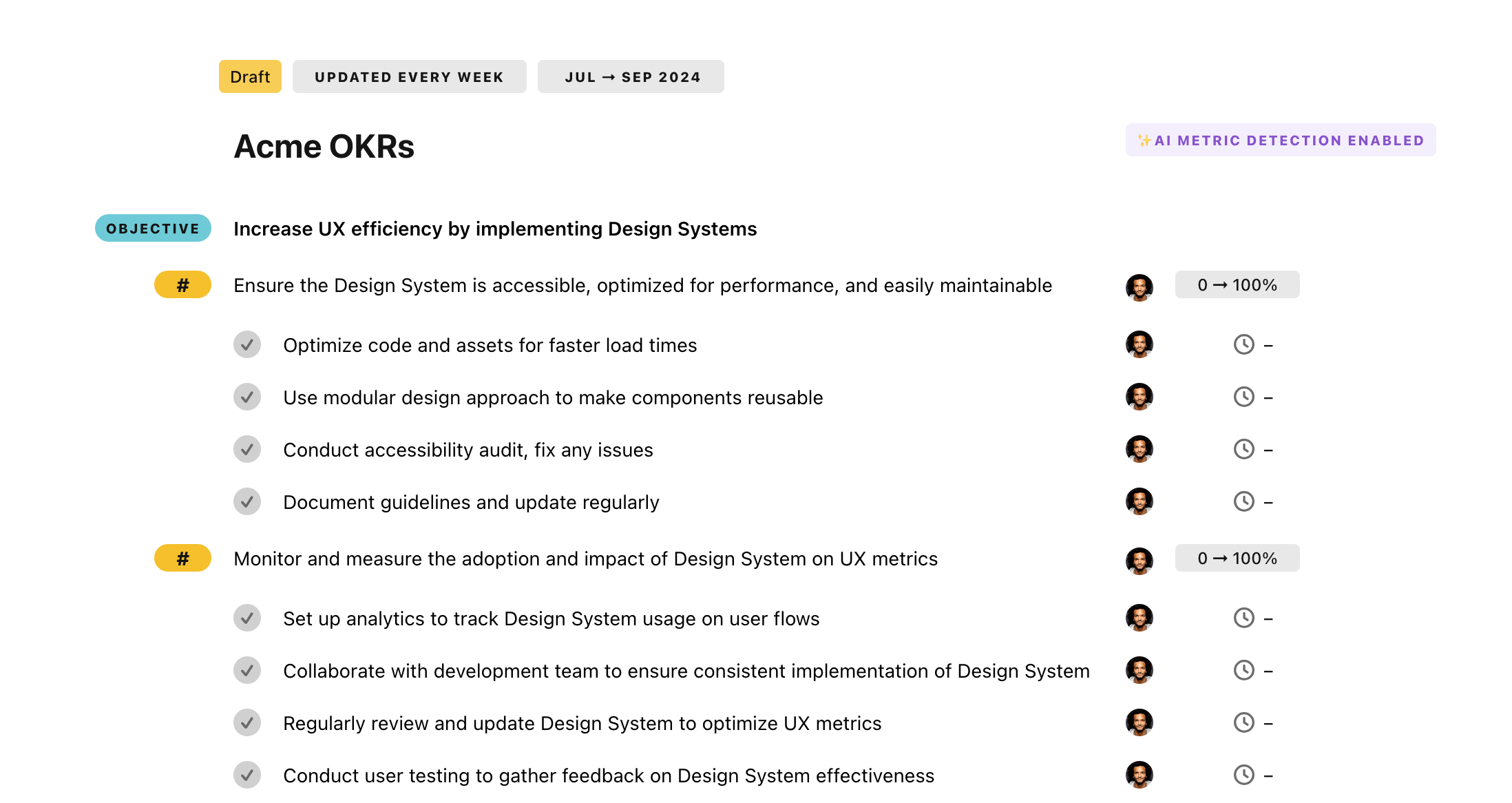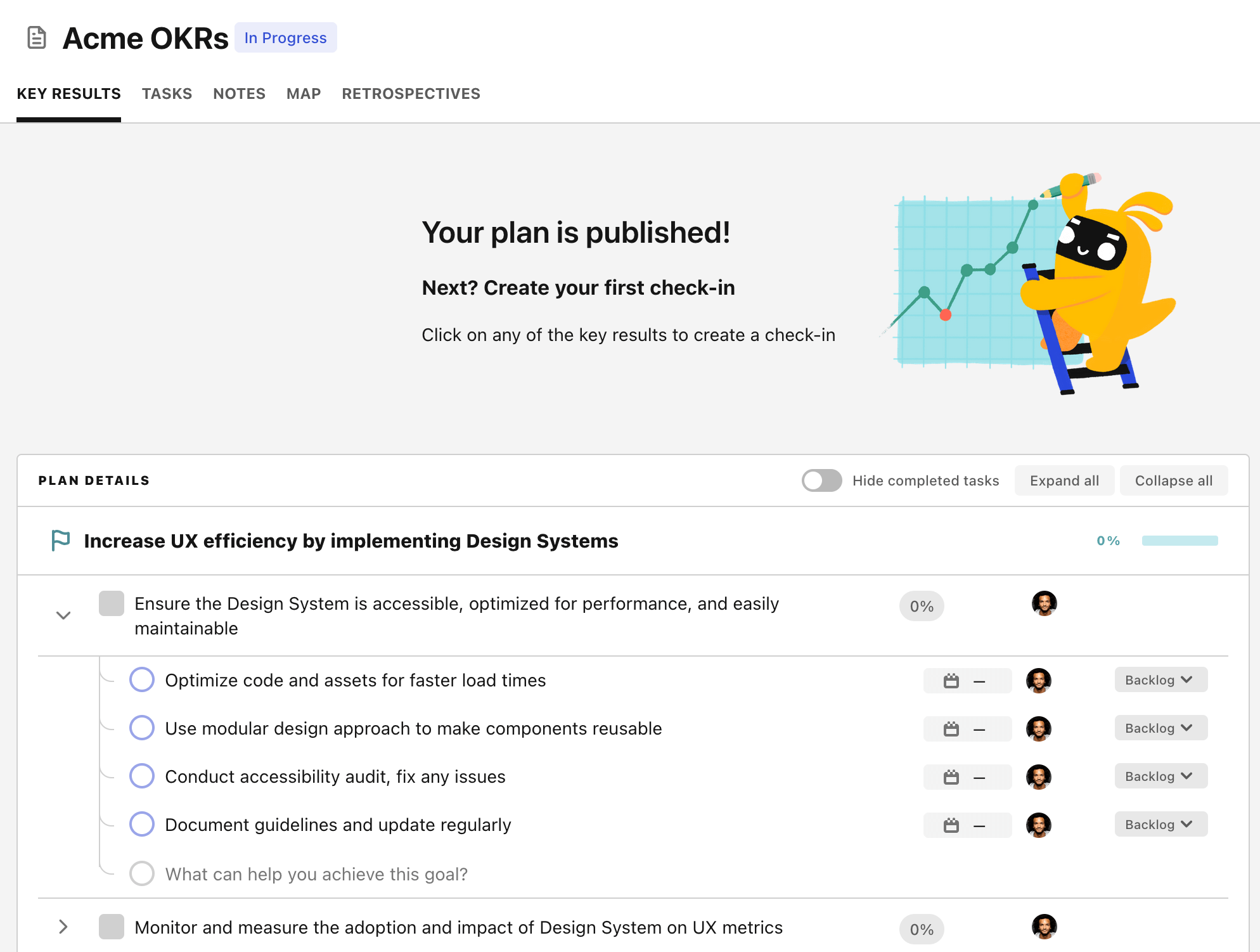OKR template to achieve proficiency in Framer app use and application
Your OKR template
The second outcome outlined in the OKR is to obtain a Framer certification by the end of a sixteen-week period. Steps that will guide this completion include doing research and enrolling in a reputable Framer certification program, successfully completing and passing all the necessary exams associated with the certification, and scheduling daily study sessions solely to master the Framer software.
The third and final key outcome to meet professionalism in Framer app use and application is to create three mini-projects every month aimed at applying the newly acquired skills. The steps to be taken include identifying new skills to be applied in the mini-projects, designing the mini-project outlines, and executing the outlined mini-projects successfully.
These assertive strategies are expected to effectively grant proficiency in using and applying the Framer app, and empowering the user through the completion of relevant courses and certification.
ObjectiveAchieve proficiency in Framer app use and application
KRComplete 4 modules on Framer tutorials per week for comprehensive understanding
Review previously learned modules weekly
Finish one module every two days
Schedule specific times weekly for Framer tutorials
KRObtain a Framer certification by the end of sixteen-week period
Research and enroll in a reputable Framer certification program
Complete and pass all required Framer certification exams
Schedule daily study sessions to master Framer software
KRCreate 3 mini-projects each month to apply newly acquired skills
Identify new skills to apply in mini-projects
Design the mini-project outlines
Execute outlined mini-projects successfully
How to edit and track OKRs with Tability
You'll probably want to edit the examples in this post, and Tability is the perfect tool for it.
Tability is an AI-powered platform that helps teams set better goals, monitor execution, and get help to achieve their objectives faster.
With Tability you can:
- Use AI to draft a complete set of OKRs in seconds
- Connect your OKRs and team goals to your project
- Automate reporting with integrations and built-in dashboard
Instead of having to copy the content of the OKR examples in a doc or spreadsheet, you can use Tability’s magic importer to start using any of the examples in this page.
The import process can be done in seconds, allowing you to edit OKRs directly in a platform that knows how to manage and track goals.
Step 1. Sign up for a free Tability account
Go tohttps://tability.app/signup and create your account (it's free!)
Step 2. Create a plan
Follow the steps after your onboarding to create your first plan, you should get to a page that looks like the picture below.

Step 3. Use the magic importer
Click on Use magic import to open up the Magic Import modal.
Now, go back to the OKR examples, and click on Copy on the example that you’d like to use.

Paste the content in the text import section. Don’t worry about the formatting, Tability’s AI will be able to parse it!

Now, just click on Import from text and let the magic happen.

Once your example is in the plan editor, you will be able to:
- Edit the objectives, key results, and tasks
- Click on the target 0 → 100% to set better target
- Use the tips and the AI to refine your goals
Step 4. Publish your plan
Once you’re done editing, you can publish your plan to switch to the goal-tracking mode.

From there you will have access to all the features that will help you and your team save hours with OKR reporting.
- 10+ built-in dashboards to visualise progress on your goals
- Weekly reminders, data connectors, and smart notifications
- 9 views to map OKRs to strategic projects
- Strategy map to align teams at scale